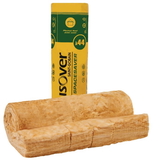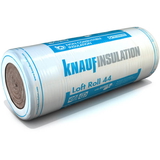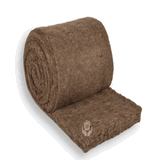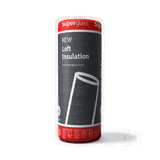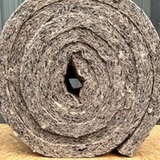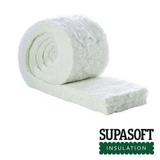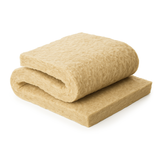- Blogs
- Knauf Loft Insulation Review: A Guide to Choosing the Best Loft Insulation for Your Home
Knauf Loft Insulation Review: A Guide to Choosing the Best Loft Insulation for Your Home

If you are looking for a way to reduce your energy bills and make your home more comfortable, you might want to consider installing loft insulation. Loft insulation is a material that prevents heat from escaping through the roof of your house, keeping it warmer in winter and cooler in summer. Loft insulation can also improve the soundproofing and fire safety of your home.
But how do you choose the best loft insulation for your needs? There are many types and brands of loft insulation available on the market, each with its own advantages and disadvantages. In this article, we will review one of the most popular and trusted brands of loft insulation: Knauf Insulation.
We will look at the features, benefits, and drawbacks of Knauf loft insulation products, and help you decide if they are suitable for your home. Knauf loft insulation is a high-quality mineral wool insulation that offers excellent thermal and acoustic performance, fire safety, and sustainability. Let’s find out more about Knauf loft insulation in this review.
Knauf is a German company that has been producing insulation products since 1932. Knauf offers a range of loft insulation products, including blanket, loose-fill and board insulation. Knauf loft insulation is made of glass mineral wool, a material that is non-combustible, odourless, eco-friendly and easy to install.
What is Knauf Loft Insulation?
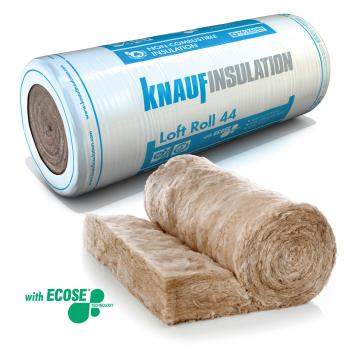 Knauf loft insulation is a type of mineral wool insulation that is made from natural and recycled materials. Mineral wool is a fibrous material that is produced by melting rocks or slag (a by-product of metal smelting) and spinning them into fine strands. These strands are then bonded together with a resin to form rolls or slabs of insulation.
Knauf loft insulation is a type of mineral wool insulation that is made from natural and recycled materials. Mineral wool is a fibrous material that is produced by melting rocks or slag (a by-product of metal smelting) and spinning them into fine strands. These strands are then bonded together with a resin to form rolls or slabs of insulation.
Knauf loft insulation comes in two main forms: Earthwool Loft Roll 44 and Earthwool Loft Roll 40. Both products are made of glass mineral wool with ECOSE Technology, a binder that is derived from natural materials and does not contain any harmful chemicals. Both products have similar properties but differ in their thermal conductivity and thickness.
Earthwool Loft Roll 44 has a thermal conductivity of 0.044 W/mK and a thickness of 100, 150, or 200 mm. Earthwool Loft Roll 40 has a thermal conductivity of 0.040 W/mK and a thickness of 100 or 150 mm.
The lower the thermal conductivity, the better the insulation performance. Therefore, Earthwool Loft Roll 40 is slightly more efficient than Earthwool Loft Roll 44, but also more expensive. You can buy Knauf loft insulation products online from our website Buy Insulation Online.
Why Choose Knauf Loft Insulation?
There are many reasons why you might want to choose Knauf loft insulation for your home. Here are some of the main benefits of Knauf loft insulation products:
- Excellent Thermal Performance. Knauf loft insulation products have a low thermal conductivity, which means they can effectively prevent heat loss through the roof. By installing Knauf loft insulation, you can improve the energy efficiency of your home, save money on your heating bills, and reduce your carbon footprint. you can save up to £240 per year on your energy bills by installing 270 mm of loft insulation.
- Superior Acoustic Performance. Knauf loft insulation products have a high density and a non-directional fibre structure, which means they can absorb and reduce sound transmission. By installing Knauf loft insulation, you can create a quieter and more peaceful living environment, especially if you live in a noisy area or near an airport. Knauf loft insulation products have a sound absorption coefficient of 0.90, which means they can reduce noise by up to 90%.
- Fire-resistant and safe. Knauf loft insulation products are made from non-combustible materials that have a Euroclass A1 fire rating, which means they do not contribute to the spread of fire or emit toxic smoke. By installing Knauf loft insulation, you can enhance the fire safety of your home and protect your family and belongings from fire hazards. Knauf loft insulation products also do not contain any harmful substances such as asbestos, formaldehyde, or CFCs.
- Environmental impact: Knauf loft insulation products are environmentally friendly and sustainable. They are made from recycled glass bottles that reduce waste and save energy. They also have low embodied energy (the amount of energy required to produce them) and low global warming potential (the amount of greenhouse gases emitted during their production) compared to other types of insulation materials. They are also free from harmful substances such as formaldehyde, asbestos, or CFCs (chlorofluorocarbons) that can affect your health or the environment.
- Ease of installation: Knauf loft insulation products are easy to install and handle. They are lightweight and flexible, which makes them easy to transport and store. They also have good acoustic properties that reduce noise transmission between floors or rooms. They come with clear instructions and guidance on how to install them correctly and safely.
What are the Drawbacks of Knauf Loft Insulation?
Although Knauf loft insulation products have many advantages, they also have some drawbacks that you should be aware of before buying them. Here are some of the main drawbacks of Knauf loft insulation products:
Requiring emptying the loft: Before installing Knauf loft insulation, you need to clear out your loft space completely, which can be time-consuming and inconvenient. You also need to ensure that there is adequate ventilation in your loft to prevent moisture build-up.
They can be difficult to install in tight spaces. Knauf loft insulation products come in rolls or slabs that are bulky and heavy. This can make them difficult to transport and install in tight spaces such as corners, eaves, or around pipes and wires. You may need to cut or fold the insulation to fit it into these spaces, which can reduce its effectiveness and create gaps or overlaps. You may also need to use additional materials such as boards or clips to secure the insulation in place.
Reducing storage space: After installing Knauf loft insulation, you cannot use your loft space for storage anymore, as placing items on top of the insulation will compress it and reduce its effectiveness. You also need to avoid walking on the insulation, as this can damage it and create cold spots.
Causing irritation: Although Knauf loft insulation is made with ECOSE Technology, which reduces dust and itchiness, some people may still experience skin or respiratory irritation when handling or installing it. Therefore, it is advisable to wear protective clothing, such as gloves, goggles, and a mask when working with Knauf loft insulation.
How Much Does Knauf Loft Insulation Cost?
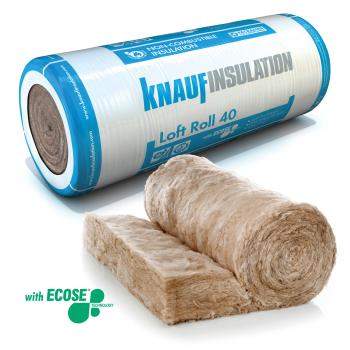 The cost of Knauf loft insulation depends on several factors, such as:
The cost of Knauf loft insulation depends on several factors, such as:
The size of your loft: The larger your loft space, the more insulation you will need to cover it. You can measure the length and width of your loft floor and multiply them to get the area in square metres. You can then divide this by the coverage of the insulation roll to get the number of rolls you need. For example, if your loft area is 50 m and the coverage of Earthwool Loft Roll 44 (200 mm) is 5.93 m, you will need 50 / 5.93 = 8.43 rolls, which you can round up to 9 rolls.
The thickness of the insulation: The thicker the insulation, the more effective it is, but also the more expensive it is. You can choose the thickness of your insulation based on the existing level of insulation in your loft and the recommended depth of 270 mm. For example, if you have no insulation in your loft, you can use Earthwool Loft Roll 44 (200 mm) as the base layer and Earthwool Loft Roll 44 (100 mm) as the top layer to achieve the desired depth. If you have 100 mm of insulation in your loft, you can use Earthwool Loft Roll 40 (150 mm) as the top layer to reach the recommended depth.
The type of the insulation: The type of the insulation affects its thermal conductivity and price. As mentioned earlier, Earthwool Loft Roll 40 has a lower thermal conductivity and a higher price than Earthwool Loft Roll 44.
How to Install Knauf Loft Insulation?
Installing Knauf loft insulation is not a difficult task, but it requires some preparation and care. Here are some of the steps you need to follow to install Knauf loft insulation in your loft:
- Measure your loft area and calculate how much insulation you need. You can use an online calculator to estimate how much insulation you need based on your loft dimensions, existing insulation thickness, and desired insulation thickness. You should aim for a minimum of 270 mm of loft insulation to meet the current building regulations.
- Buy the right amount and type of Knauf loft insulation. You can buy Knauf loft insulation products online from Buy Insulation Online or other suppliers. You should choose the type and thickness of insulation that suits your budget and thermal performance requirements. You should also buy some accessories such as gloves, a dust mask, a tape measure, scissors, and a knife to help you with the installation process.
- Prepare your loft for insulation. You should clear your loft of any clutter, debris, or unwanted items. You should also check for any signs of dampness, mould, or pests, and fix any issues before installing the insulation. You should also ensure that your loft has adequate ventilation to prevent condensation and moisture problems. You can install vents or fans to improve the air circulation in your loft.
- Lay the first layer of insulation between the joists. You should unroll the insulation and cut it to size using a knife or scissors. You should then lay the insulation between the joists, making sure that it fits snugly and covers the entire area. You should avoid compressing or stretching the insulation, as this will reduce its effectiveness. You should also leave some gaps around pipes, wires, and light fittings to prevent overheating or fire risks.
- Lay the second layer of insulation across the joists. You should unroll the insulation and cut it to size using a knife or scissors. You should then lay the insulation across the joists, perpendicular to the first layer. You should overlap the edges of the insulation by at least 100 mm to create a continuous layer. You should also stagger the joints of the insulation to avoid thermal bridging. You should avoid compressing or stretching the insulation, as this will reduce its effectiveness.
- Finish the installation and tidy up. You should check that you have covered the entire loft area with insulation and that there are no gaps or exposed areas. You should also secure the insulation with tape or staples if necessary. You should then tidy up your loft and dispose of any waste materials properly. You should also label your loft hatch with a warning sign that indicates the type and thickness of insulation you have installed.
By following these steps, you can successfully install Knauf loft insulation in your loft and enjoy its benefits. However, if you are not confident or experienced in DIY projects, you may want to hire a professional installer to do the job for you or you can contact us for the installation of Knauf’s loft insulation.
Frequently Asked Questions
Q: What is a loft insulation roll?
A: Loft insulation roll is a type of insulation material that is specifically designed to be installed in the loft or attic space of a building. It is typically in the form of a roll, hence the name, and is made from materials such as glass mineral wool or earthwool.
Q: What is earthwool loft insulation?
A: Earthwool loft insulation is a brand of insulation made from glass mineral wool. It is known for its excellent thermal and acoustic insulation properties, as well as being easy to handle and install. It is also non-combustible and non-hygroscopic, which means it does not encourage the growth of fungi.
Q: What is the difference between 200mm and 100mm loft roll?
A: The difference between 200mm and 100mm loft roll refers to the thickness of the insulation material. A 200mm loft roll is thicker than a 100mm loft roll, and as a result, provides a higher level of insulation. The choice between the two depends on the level of insulation required and the available space in the loft.
Q: What is a non-combustible insulation?
A: A non-combustible insulation is a type of insulation material that does not burn when exposed to fire. This is an important safety feature, as it helps to prevent the spread of fire in a building. Knauf Earthwool loft roll 44, for example, is a non-combustible insulation with an A1 reaction to fire classification.
Q: What does it mean for loft roll to be non-hygroscopic?
A: For loft roll to be non-hygroscopic means that it does not absorb or retain moisture from the air. This is important because moisture can reduce the effectiveness of insulation and lead to issues such as mold growth. Non-hygroscopic insulation, like Earthwool loft roll, helps to maintain a dry and healthy environment in the loft.
Q: What is combi-cut in loft insulation?
A: Combi-cut refers to a feature in loft insulation where the material is partially perforated, allowing for easy cutting and handling. This makes it convenient to install the insulation around obstacles such as joists or other obstructions in the loft space.
Q: Is loft roll insulation odorless?
A: Yes, loft roll insulation, including Earthwool loft roll, is odorless. This means there are no unpleasant smells associated with the installation or use of the insulation material, providing a more comfortable living environment.
Q: Is loft roll insulation easy to install?
A: Yes, loft roll insulation is designed to be easy to install. It can be unrolled and cut to size, making it flexible to fit into various spaces. The combi-cut feature also allows for easy handling and installation around obstacles in the loft.
Q: Is loft roll insulation rot-proof?
A: Yes, loft roll insulation, such as the Knauf Earthwool loft roll 44, is rot-proof. This means it is not susceptible to rot or decay over time, ensuring long-lasting performance and durability.
Q: What are the benefits of using loft insulation?
A: Using loft insulation offers several benefits. It helps to improve energy efficiency in your home by reducing heat loss through the roof, which can lead to lower heating bills. It also provides thermal and acoustic insulation, making your home more comfortable and reducing external noise. Additionally, loft insulation helps to reduce carbon emissions and is environmentally friendly.
Q: What is Knauf Loft Insulation?
A: Knauf Loft Insulation is a type of insulation material that is designed to be used in lofts or attics to provide thermal insulation for your home.
Q: What are the benefits of Knauf Loft Insulation?
A: Knauf Loft Insulation provides excellent thermal insulation, helping to keep your home warm in the winter and cool in the summer. It is odourless and rot proof, ensuring long-term protection for your home.
Q: What is the difference between Knauf Earthwool Loft Roll 44 and other loft insulation materials?
A: Knauf Earthwool Loft Roll 44 is a glass mineral wool roll that is specifically designed for use in cold lofts at ceiling level. It can be used uncut as a full-width roll, providing flexibility to be used between joists or used uncut as a full-width roll. Other loft insulation materials may have different properties and recommended uses.
Q: Can Knauf Loft Insulation be used in pitched roofs?
A: Yes, Knauf Loft Insulation can be used in pitched roofs at ceiling level. It is designed to provide effective thermal insulation in this application.
Q: How do I install Knauf Loft Insulation?
A: Installing Knauf Loft Insulation is a relatively straightforward process. You can roll out the insulation material between the joists or use it uncut as a full-width roll. It is recommended to carefully follow the manufacturer's instructions for proper installation.
Q: Is Knauf Loft Insulation suitable for use in suspended timber floors?
A: Yes, Knauf Loft Insulation can be used in suspended timber floors to provide thermal insulation. It is designed for use in various applications, including cold lofts at ceiling level.
Q: Where can I purchase Knauf Loft Insulation?
A: Knauf Loft Insulation, such as the Knauf Earthwool Loft Roll 44, is available at various retailers. You can find it in online from Buy Insulation Online with us.
Q: What is the Euroclass A1 reaction to the fire rating of Knauf Loft Insulation?
A: Knauf Loft Insulation is classified as Euroclass A1, which means it has the highest level of fire resistance. It is suitable for use in areas where fire safety is a concern.
Q: What sizes are available for Knauf Loft Insulation?
A: Knauf Loft Insulation, such as the Knauf Earthwool Loft Roll 44, is available in various pack sizes. Exact measurements may vary, but commonly available sizes include 200mm and other sizes to suit different loft spaces.
Q: Can Knauf Loft Insulation be used in other areas of the house?
A: Knauf Loft Insulation is primarily designed for use in lofts or attics. However, it may also be suitable for use in other areas of the house where thermal insulation is required, subject to local building codes and regulations.
Q: Can I install Knauf Loft Insulation myself?
A: Yes, it is possible to install Knauf Loft Insulation yourself. However, it is important to follow the manufacturer's instructions and take necessary safety precautions during installation. If in doubt, consulting a professional may be advisable.
Conclusion
Knauf loft insulation is one of the best choices for insulating your home’s roof space. It is made from natural and sustainable mineral wool that has excellent thermal and acoustic properties, as well as fire resistance and moisture resistance. It comes in two forms: rolls and slabs that are easy to install and maintain. It can help you save money on your energy bills, make your home more comfortable and quieter, protect your home from dampness and mould, and improve your home’s carbon footprint.
If you are interested in buying Knauf loft insulation products for your home, you can visit us at Buy Insulation Online, we are a leading online supplier of insulation products in the UK. We offer a wide range of Knauf loft insulation products at competitive prices and with fast delivery. We also provide expert advice and guidance on how to choose and install Knauf loft insulation products for your home.
We hope this article has given you a comprehensive review of Knauf loft insulation and its benefits for your home. If you have any questions or feedback, please contact us at Buy Insulation Online. We are happy to help you with your loft insulation needs.

Samuel Hitch
Managing Director
Buy Insulation Online.
Leave A Reply
Your feedback is greatly appreciated, please comment on our content below. Your email address will not be published. Required fields are marked *
